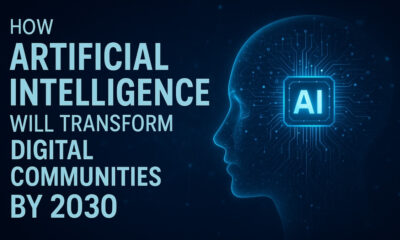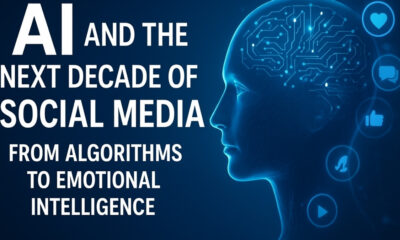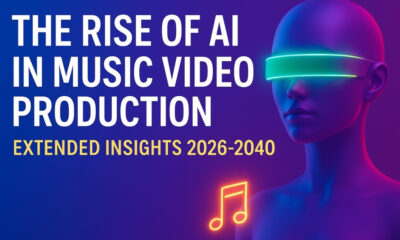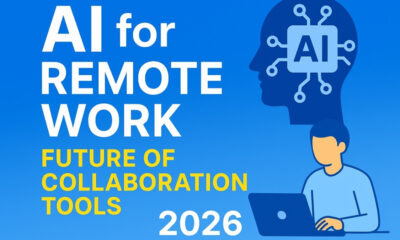AI Video Generation
VideoPoet: Google’s Breakthrough in Zero-Shot Multimedia Generation!
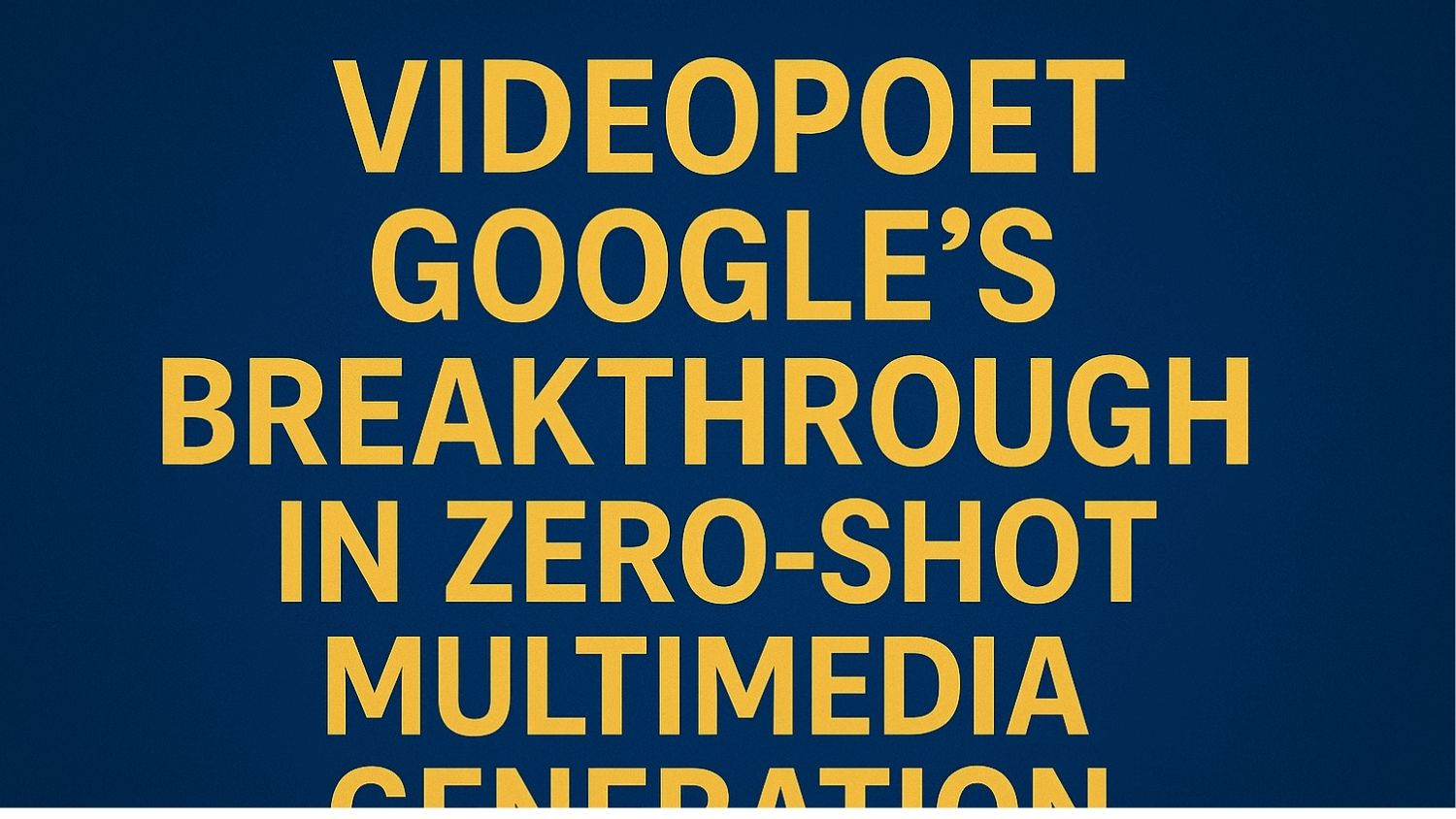
Google’s VideoPoet marks a significant step in the world of AI video generation. Unlike traditional models that require large datasets and fine-tuning, VideoPoet is a zero-shot video generation tool capable of transforming simple text prompts into dynamic video sequences. This technology represents the future of content creation, enabling businesses, marketers, and creators to produce professional-grade videos without extensive technical knowledge or costly production tools.
What is VideoPoet?
VideoPoet is an advanced AI framework developed by Google to convert textual input directly into high-quality video outputs. Unlike typical models that depend on large-scale training for each scenario, this system uses pre-trained multimodal understanding to generate relevant, context-aware visual sequences instantly. It is optimized for speed, scalability, and versatility, making it ideal for commercial, educational, and creative purposes.
Key Features of VideoPoet
- Zero-Shot Video Generation – Produces videos without additional training or fine-tuning.
- Multimodal Understanding – Integrates text, image, and audio comprehension for cohesive video output.
- High-Resolution Outputs – Generates sharp, cinematic-quality visuals suitable for marketing and corporate use.
- Scalable for Multiple Industries – Useful for advertising, e-learning, product demos, and entertainment.
- Cloud-Based Accessibility – Runs on Google’s cloud ecosystem for easy integration and scalability.
Why VideoPoet Matters for Creators and Businesses
VideoPoet’s approach allows teams to reduce production time and costs significantly. For businesses, this means quicker campaign launches, greater personalization, and the ability to scale video content across multiple platforms. For creators, the ease of converting an idea into a polished video helps break barriers to entry, allowing for innovation and experimentation without expensive equipment or crews.
Impact on Video Production and Marketing
The zero-shot capability makes VideoPoet particularly useful in dynamic industries like marketing, where speed and adaptability are essential. Brands can instantly create promotional clips, social media content, or even training videos. Educators and enterprises can transform learning materials into interactive, video-based modules without heavy investment.
Platform & Features Table
| Platform/Tool | Features | Ideal For |
|---|---|---|
| VideoPoet by Google | Zero-shot video generation, text-to-video conversion, high-quality visuals | Businesses, educators, marketers, content creators |
| Other Competitors | Limited shot models, more manual training needed | Niche creators, R&D teams |
| Cloud Integration | Easy integration with Google Cloud for scalability and deployment | Enterprises, startups, SaaS platforms |
How VideoPoet Works
At its core, VideoPoet uses pre-trained AI models that integrate natural language understanding, visual processing, and generative algorithms. When a user inputs a prompt, the system maps the text to relevant visual and auditory components. It then produces coherent, context-rich video sequences. This technology reduces the dependency on large video datasets or manual editing, saving time and cost.
Core Features of VideoPoet
- Zero-Shot Video Creation – No need for fine-tuning; videos generated directly from prompts.
- Multimodal Integration – Combines text, image, audio, and motion to deliver lifelike content.
- Cloud Scalability – Built to run on Google Cloud, ensuring accessibility and high performance for enterprises.
- High-Resolution Output – Generates HD and 4K videos suitable for professional use.
- Flexible Applications – Can produce everything from ads, product explainers, training videos, to social media snippets.
- AI Optimization – Uses reinforcement learning to improve output relevance and aesthetics.
- Customization Options – Allows branding elements, tone adjustments, and stylistic preferences.
Why VideoPoet Stands Out
Unlike older tools that require extensive dataset-specific training, VideoPoet leverages pre-trained multimodal AI to achieve near-instant results. It focuses on user simplicity and quality output, reducing the need for technical teams or heavy editing software. It also enables fast iteration, making it attractive for industries needing frequent video updates.
Use Cases and Industry Applications
- Marketing & Advertising – Quick promotional video creation for campaigns.
- E-Learning – Transforming course material into engaging visuals.
- Corporate Training – AI avatars and explainer videos for onboarding and skill development.
- E-Commerce – Product demonstrations and catalog visuals generated on demand.
- Content Creators & Influencers – Rapid production of short-form or long-form content.
Technical Insights
VideoPoet uses transformer-based models similar to those in large language models but optimized for video synthesis. It integrates latent diffusion techniques and frame interpolation for smoother outputs. By employing zero-shot learning, it eliminates manual scene tagging, allowing it to understand context and produce sequences immediately.
Benefits Over Traditional Video Production
- Lower cost and faster turnaround.
- No need for advanced editing skills.
- Scalability for businesses and teams.
- Adaptable to different languages and markets.
- Supports personalization and branding.
Technical Highlights & Innovations
- Multimodal Transformer Architecture: VideoPoet combines text, image, video, and audio understanding using a decoder-only transformer framework.
- Advanced Tokenization Strategy: Utilizes models like MAGVIT V2 for visual frame encoding and SoundStream pipelines for audio encoding, creating a unified vocabulary for generation.
- Zero-Shot Learning: Capable of text-to-video, image-to-video, stylization, inpainting/outpainting, and video-to-audio conversion—all without additional model training.
- High-Fidelity Outputs: Generates smooth and realistic animations, effectively addressing motion and frame consistency challenges seen in diffusion-based models.
- Research Recognition: Awarded Best Paper at ICML 2024 for its innovative contributions to AI multimedia generation.
Use Cases and Application Opportunities
- Marketing & Advertising: Create promotional videos swiftly from textual scripts or visual briefs.
- Education & E-Learning: Convert course outlines or static materials into animated, narrated learning modules.
- Corporate Communications & Training: Produce branded, voice-over videos for internal outreach and onboarding.
- Content Creation & Social Platforms: Empower creators to generate short-form content like instructional clips or story-driven visuals.
Leading-Edge Capabilities
VideoPoet stands out due to its integration of advanced motion synthesis, audio-video synchronization, and extensive prompt flexibility. As a cloud-native, research-focused model, it offers unmatched speed and creative potential compared to traditional AI video tools requiring heavy dataset training.
AI Video Generation
DeepMind Veo 3: Complete Guide to AI Text-to-Video with Audio Integration!

AI video generation has entered a new era with DeepMind’s Veo 3, an advanced platform that merges text prompts, video generation, and synchronized audio. Designed for both creative professionals and enterprises, Veo 3 allows content creators to transform written scripts into full-scale multimedia experiences. With industries demanding more dynamic and accessible content, this tool is poised to redefine how we think about video production.
Key Features of DeepMind’s Veo 3
- Text-to-Video Conversion: Users can input detailed scripts or prompts to generate high-quality, realistic video sequences.
- Audio Integration: Unlike many competitors, Veo 3 supports natural-sounding audio generation aligned with visuals.
- Customization Options: Includes scene selection, visual styles, pacing, and tone adjustments.
- High Scalability: Capable of creating short social clips to full-length presentations.
- Enterprise-Level Security and Access Control: Ensures safe usage for businesses.
Why Veo 3 Matters for Businesses and Creators
With content consumption on the rise, video remains the most engaging medium. Veo 3’s unique capability to merge video and audio reduces production costs and timelines, giving brands an edge. It is especially useful for:
- Marketing agencies
- Training and educational platforms
- Film and media production
- Social media creators
Detailed Comparison with Other AI Tools
While competitors like Runway ML, Pika Labs, and Adobe Firefly offer strong video features, most lack fully integrated audio synthesis. Veo 3 stands out for its robust multimodal approach, providing a near end-to-end content creation pipeline.
Future Potential
DeepMind is expected to integrate multilingual support, voice cloning, and real-time rendering. These advancements could expand the tool’s use in global communication, e-learning, and immersive storytelling.
Tabular Overview
| Platform/Tool | Key Features | Ideal For |
|---|---|---|
| DeepMind Veo 3 | Text-to-video, audio sync, customizable visuals | Enterprises, marketers, educators, creators |
| Runway ML | Video editing, generative video, effects | Creative professionals, media houses |
| Adobe Firefly | AI-driven design and video capabilities | Designers, content creators, marketers |
| Pika Labs | Quick video generation from prompts | Social media creators, startups |
Why Veo 3 Is Different from Previous Generations
- Multimodal AI Core: Unlike early models, Veo 3 integrates visual and auditory elements simultaneously, reducing production complexity.
- Natural Language Understanding: Improved language-to-scene accuracy, ensuring that even complex prompts deliver relevant visuals and synced audio.
- Faster Rendering: Optimized model architecture significantly reduces processing time, making it suitable for large-scale enterprise projects.
- Extended Asset Library: Preloaded with visual templates, scene transitions, audio effects, and voice options for more creative control.
Business and Industry Applications
Veo 3 isn’t just for casual creators; its true value lies in business and industry applications:
- Corporate Training: Generate multilingual training videos with voiceovers.
- Product Marketing: Quick turnaround for promotional videos without a large production team.
- Entertainment & Media: Storyboarding, concept visualization, and low-budget productions.
- Education & E-Learning: Create explainer videos with voice narration for online courses.
Technical Advancements in Veo 3
- AI Speech Generation: Offers realistic voice modulation with tone, pitch, and emotion control.
- Scene Composition AI: Breaks down text input into multiple visual layers—backgrounds, animations, characters.
- Adaptive Audio Sync: Ensures that dialogue, effects, and background music align perfectly with visuals.
- Integration Ready: API and SDK support for developers to integrate Veo 3 into apps and platforms.
Future Outlook
- DeepMind is rumored to be working on real-time editing and virtual actor generation, allowing creators to produce full-length films with AI-generated characters.
- Multilingual capabilities with natural lip-sync could make Veo 3 a top choice for global companies.
- Cloud-based collaboration features are expected, making large projects easier to manage.
Extended and Updated Content
1. Introduction to Veo 3’s Market Impact
DeepMind’s Veo 3 is not just an incremental update—it represents a paradigm shift in multimedia AI. By combining visual generation, real-time audio, and contextual understanding in one pipeline, Veo 3 enables teams to go from concept to final output without heavy production costs. It aligns perfectly with current trends: short-form content, interactive training, globalized messaging, and accessible creative workflows.
2. Core Innovations in Veo 3
- Enhanced Multimodal Learning: Veo 3 uses transformer-based multimodal networks capable of interpreting text, generating visuals, and aligning audio precisely.
- High-Fidelity Audio Narration: Its speech synthesis engine produces studio-grade narration with customizable voice tones, accents, and emotional delivery.
- Scene Intelligence: Generates multiple camera angles, dynamic lighting, and motion effects automatically based on prompt descriptions.
- Scalability: Handles everything from 15-second clips to full training modules, with cloud rendering optimized for enterprise-grade deployments.
3. New and Unique Features Compared to Competitors
- Realistic Lip-Sync for AI Avatars: Enhances authenticity in corporate communications and learning videos.
- Auto-Generated Soundscapes: Background music, effects, and environmental sounds are auto-matched to visuals for storytelling.
- Collaboration-Ready Platform: Multiple team members can work on a project simultaneously using cloud-based workflows.
- Privacy and Security: Built with enterprise security, including end-to-end encryption for sensitive training materials.
4. Enterprise-Level Benefits
- Cost Efficiency: Replaces expensive production crews with automated pipelines.
- Faster Time-to-Market: Ideal for businesses needing rapid content turnaround.
- Customization for Brands: Offers white-labeling, custom branding elements, and proprietary asset integration.
- Accessibility: Supports multilingual output, making global communication easier.
5. Developer and Technical Insights
- APIs and SDKs: Open interfaces allow integration with LMS platforms, content management systems, and internal apps.
- Model Architecture: Combines vision-language models with audio transformers for synchronized outputs.
- Data Handling: Optimized for high-volume projects; supports video export in multiple resolutions and codecs.
- Future-Ready: Rumored updates include AR/VR support and real-time interaction tools for immersive experiences.
6. Future Outlook and Market Potential
- Global Market Growth: AI-driven video creation is expected to become a $20B+ industry by 2028, with Veo 3 pushing toward automation and personalization.
- Integration with Mixed Reality: Future updates could merge Veo 3 with XR platforms for interactive storytelling.
- Content Democratization: Lowers the barrier for individuals and small businesses to create professional-level content without technical expertise.
- AI Governance: DeepMind is also focusing on ethical usage, ensuring generated content adheres to copyright and responsible AI guidelines.
AI Video Generation
MAGI-1 and the Future of AI Video Production Workflows!
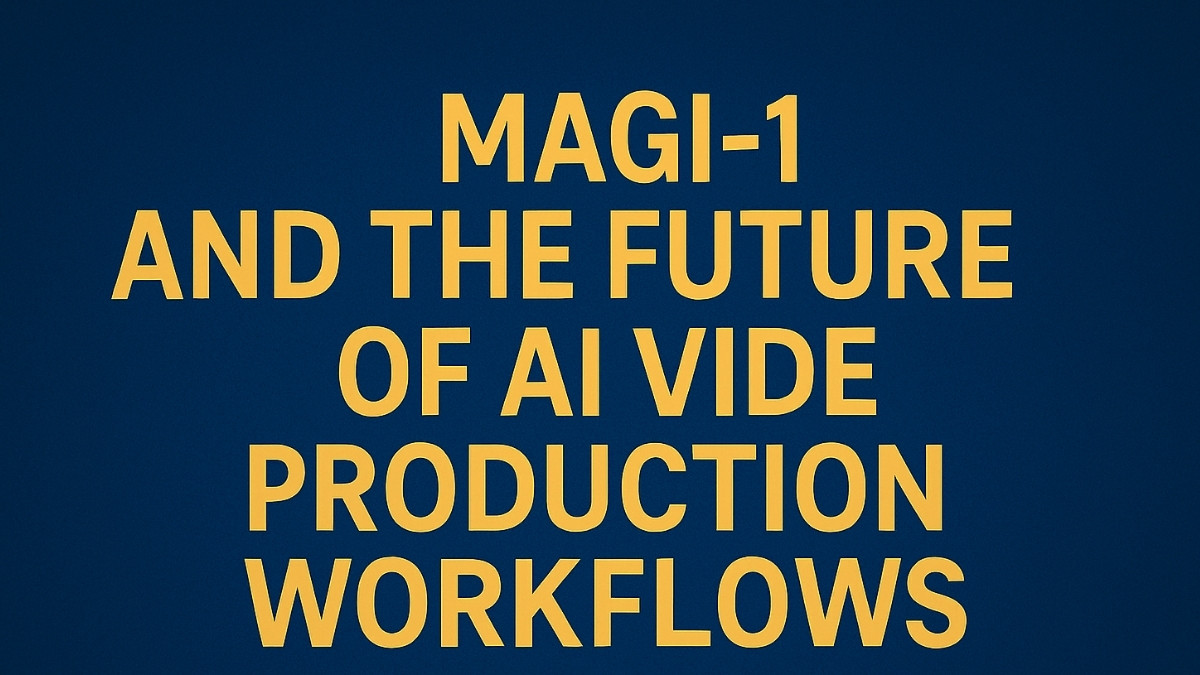
The field of AI-powered video generation is advancing rapidly, and MAGI-1 stands out as a cutting-edge solution. Designed for scalability and efficiency, MAGI-1 offers a powerful platform to generate high-quality video content for enterprises, developers, and creative teams. In an era where multimedia production demands speed and personalization, MAGI-1 delivers both flexibility and innovation, bridging the gap between creativity and technology.
Key Features of MAGI-1
- Scalable Architecture – Built to handle enterprise-level workloads, producing thousands of videos simultaneously.
- Multimodal Input Support – Accepts text, images, and audio to create dynamic video outputs.
- Advanced Neural Networks – Incorporates transformer-based models for realistic motion, transitions, and voice integration.
- Cloud-Based Workflow – Easy integration with APIs and cloud platforms, ideal for distributed teams.
- Customization Options – Tailors videos for branding, marketing, education, and entertainment.
Why MAGI-1 Matters in 2025
The demand for scalable video production is skyrocketing as businesses compete in digital storytelling and advertising. MAGI-1 offers cost-effective solutions that reduce manual editing and deliver personalized content faster. For developers, its modular design allows integration into existing pipelines, making it a valuable tool in AI-driven media.
Table: Platform, Features, Ideal For
| Platform | Features | Ideal For |
|---|---|---|
| MAGI-1 | Large-scale video generation, cloud integration, multimodal inputs, customizable workflows | Enterprises, content creators, marketing agencies, developers |
| Scalable AI Video Tools | Batch rendering, API-driven, supports automation and personalization | SaaS companies, e-learning, ad tech firms |
| Creative AI Platforms | Enhanced motion graphics, real-time rendering, audio-video sync | Film studios, YouTubers, production teams |
Key Features of MAGI-1
- Scalable Architecture – Built to handle enterprise-level workloads, producing thousands of videos simultaneously.
- Multimodal Input Support – Accepts text, images, and audio to create dynamic video outputs.
- Advanced Neural Networks – Incorporates transformer-based models for realistic motion, transitions, and voice integration.
- Cloud-Based Workflow – Easy integration with APIs and cloud platforms, ideal for distributed teams.
- Customization Options – Tailors videos for branding, marketing, education, and entertainment.
Why MAGI-1 Matters in 2025
The demand for scalable video production is skyrocketing as businesses compete in digital storytelling and advertising. MAGI-1 offers cost-effective solutions that reduce manual editing and deliver personalized content faster. For developers, its modular design allows integration into existing pipelines, making it a valuable tool in AI-driven media.
Advanced Capabilities and Features
- Hybrid Cloud Architecture – Supports both on-premise and cloud deployments, ensuring security and performance for organizations with diverse IT policies.
- Automated Scene Generation – Uses advanced prompt understanding and scene composition to convert ideas into polished video sequences.
- Integrated Audio Intelligence – Syncs soundtracks, narration, and sound effects automatically with video cues.
- Fine-Tuned Custom Models – Enterprises can train MAGI-1 on proprietary datasets for brand-specific or industry-specific outputs.
- Collaboration Tools – Built-in versioning, review workflows, and team dashboards enhance productivity for large teams.
Key Benefits for Businesses and Developers
- Speed and Efficiency – Reduce production time from weeks to hours.
- Cost Optimization – Lower expenses by replacing manual editing with AI-driven automation.
- Content Personalization – Create multiple versions of videos for targeted audiences.
- APIs and Integration – Flexible APIs make it easy to integrate with CRMs, LMS platforms, and marketing stacks.
- Scalable Outputs – Suitable for campaigns needing thousands of video variants, such as product demos, ads, or educational content.
Industry Impact
- Marketing and Advertising – Enables agencies to launch hyper-personalized video ads across regions and languages.
- Education and Training – Corporations and institutions use MAGI-1 for large-scale learning modules, onboarding, and compliance training.
- Entertainment and Media – Studios can rapidly prototype storyboards or create supplementary content at lower cost.
AI Video Generation
Open-Sora 2.0: Unlocking Next-Gen AI Video Creation for Businesses and Creators!
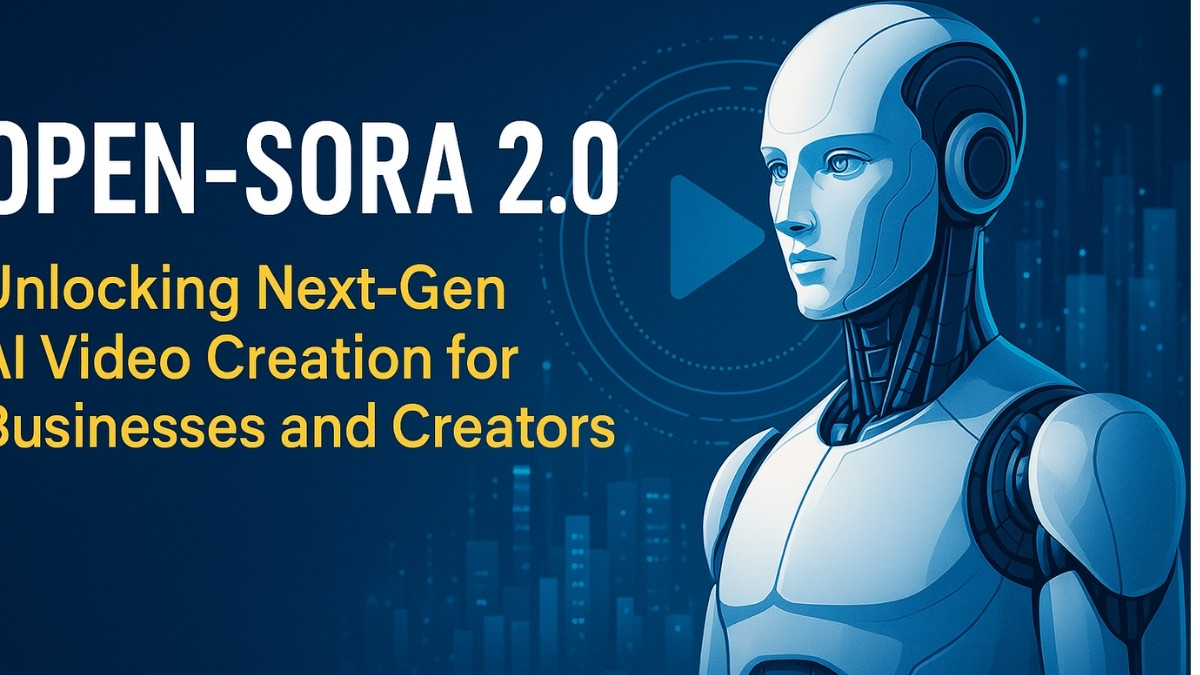
AI video generation is rapidly moving from experimental labs to mainstream creative and business workflows. Among the key players, Open-Sora 2.0 stands out by aiming to democratize access to enterprise-grade video generation tools. Built on scalable architectures and designed for flexibility, it promises to empower creators, developers, and companies with commercial-level AI video production at reduced costs and complexity.
Core Features and Capabilities
Open-Sora 2.0 introduces enhanced scalability, allowing users to generate longer, high-quality videos with minimal hardware demands. Its updated framework supports multiple input formats, including text, image, and reference video prompts, enabling versatile storytelling and marketing uses. With robust APIs and open documentation, developers can integrate AI video generation into existing platforms or custom pipelines.
Why It Matters
Until recently, enterprise-level AI video tools were expensive and limited to tech giants. Open-Sora 2.0’s open and flexible model lowers the barrier to entry, helping smaller studios, educators, startups, and independent creators compete in a market previously dominated by closed, high-cost solutions. This democratization fosters innovation, accelerates content creation, and could reshape industries from advertising to e-learning.
Use Cases and Industry Impact
- Content Marketing: Brands can generate promotional videos rapidly with tailored visuals.
- Education & Training: Institutions can create interactive learning modules cost-effectively.
- Entertainment: Indie filmmakers and animators gain access to affordable production-quality tools.
- Enterprise: Businesses can scale video creation for internal communications and product demos.
Technical Edge
Built on advanced AI architectures, Open-Sora 2.0 leverages improved generative models, real-time rendering, and adaptive learning to ensure accuracy and efficiency. Its modular design allows continuous updates and community-driven improvements.
Table: Platforms and Features
| Platform | Key Features | Ideal For |
|---|---|---|
| Open-Sora 2.0 | High scalability, supports text-to-video, image-to-video, and API integration | Startups, creators, enterprise solutions |
| MAGI-1 | Large-scale video generation, research-focused | Developers, AI researchers |
| Veo 3 | Text-to-video with synchronized audio | Content studios, corporate communications |
| VideoPoet | Zero-shot video generation and creative experimentation | Creative professionals, animators |
Expanded Capabilities and Use Cases
- Content Marketing & Branding
- Enables brands to generate tailored video campaigns quickly.
- Custom voiceovers and localized content for global reach.
- Corporate Learning & Internal Communication
- AI-generated explainer videos, onboarding tutorials, and training modules.
- Consistent visual branding across all educational assets.
- Education & Research
- Interactive e-learning videos for universities and ed-tech platforms.
- Ability to experiment with AI models for academic research.
- Film, Animation & Creative Production
- Indie filmmakers and animators gain access to tools previously available only to large studios.
- Storyboarding, concept art visualization, and pre-visualization tools.
- Platform Integration
- Can be integrated into SaaS tools, mobile applications, or internal enterprise systems.
- Supports cloud and hybrid deployment models.
Technical Highlights
- Architecture: Uses modular frameworks for flexibility and rapid deployment.
- Data Handling: Can be trained or fine-tuned with proprietary data while maintaining security.
- Quality Control: Includes automated review pipelines to ensure output accuracy and compliance.
- Future Roadmap: Upcoming features include real-time video synthesis, avatar integration, and advanced audio synchronization.
Why Open-Sora 2.0 Stands Out
- Open yet Secure: Unlike fully closed systems, it allows transparency while supporting enterprise-grade data security.
- Modular Design: Supports plug-and-play modules for text-to-video, image-to-video, and video editing pipelines.
- Cloud and On-Premise Options: Companies can choose between cloud-based workflows or localized installations for sensitive projects.
- Cost-Efficient Scalability: Designed to meet the needs of both indie creators and global enterprises.
Deep Dive into Features
- Multi-Modal Generation
- Combines text, still images, and motion assets to produce coherent video sequences.
- Supports contextual storytelling with scene transitions and audio syncing.
- Commercial and Creative Use Cases
- Advertising & Branding: AI-generated ads with fast turnaround.
- Education & Training: Explainer videos, lectures, and AR/VR content for immersive learning.
- Corporate Communications: Internal updates, presentations, and product demos.
- Creative Arts & Entertainment: Short films, animation, previsualization, and prototype videos.
- Integration & API Support
- Can integrate into CRMs, LMS platforms, and custom applications.
- API-ready architecture allows scaling video workflows within existing systems.
- AI Ethics and Content Controls
- Built-in content moderation features for safer AI use.
- Allows enterprise clients to define ethical boundaries and compliance requirements.
Technical Advantages
- GPU/CPU Optimization: Runs efficiently on mid-range hardware and scales on high-performance clusters.
- Data Privacy: Supports proprietary datasets without exposing sensitive information.
- Versioning and Updates: Regular community-driven updates and improvements.
- Roadmap Highlights: Upcoming features include AI avatars, multilingual synthesis, real-time rendering, and immersive audio integration.



